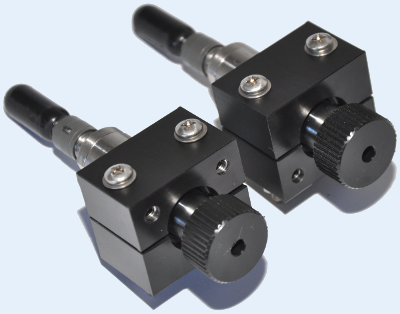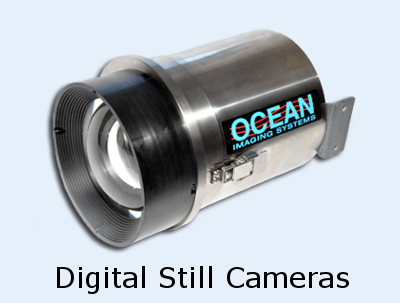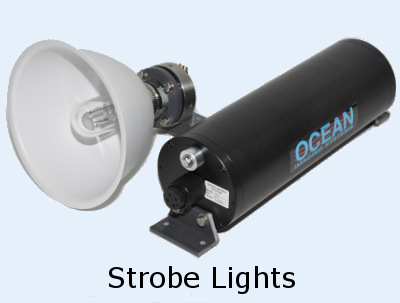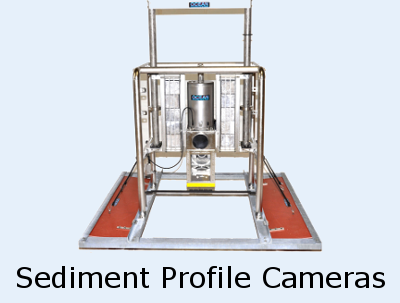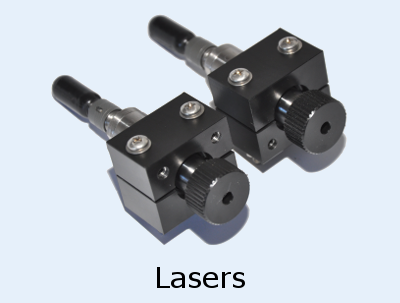Digital Still Cameras
Ocean Imaging Systems (OIS) released its first digital still camera in 2002. The DSC 24,000 Digital Still Camera is the latest in our line of digital still cameras. Featuring a 24.1 megapixel sensor, a Nikon F mount lens, high pressure optical glass view port and various housing options, the DSC 24,000 offers exceptional image quality for ROV, towed and autonomous applications.
By utilizing a completely unmodified Nikon D7100 digital single-lens reflex camera (DSLR), the DSC 24,000 is able to utilize high quality Nikon DSLR lenses, while allowing for relatively inexpensive and easy exchange of the camera body and/or lens.
A custom control PC board provides autonomous intervalometer functions, remote control capability and high efficiency power management, required for long term deployments.
The mechanical packaging and electrical design of the DSC 24,000 have been done with an eye towards upgrading the camera body as newer and higher performing cameras become available. The camera is offered with four housing options (17-4 Stainless Steel, 316 Stainless Steel, 6AL-4V Titanium and Anodized 6061-T6 Aluminum).
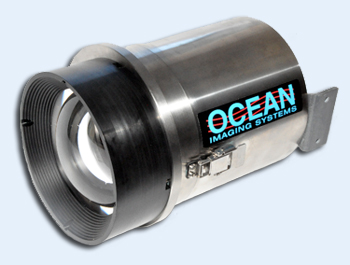
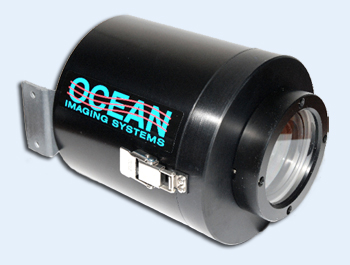
Strobe Lights
Underwater strobe systems are a specialty of Ocean Imaging Systems (OIS). We build a variety of strobes, both for use with our own cameras, as well as for use with any customer-supplied camera. We have built many custom strobe packages for AUV, ROV, towed, and long-term (tripod/benthic lander) applications. We offer strobes in several power levels that range from 100 joules up to 600 joules. Standard strobes can be supplied in aluminum, stainless steel, or titanium housings, with depth ratings of 2,000 or 6,000 meters. Our strobes can be supplied with their own internal battery or be externally powered. In addition, OIS can supply strobe components for integration within the customer’s housing or vehicle. All OIS strobes feature high-efficiency, high voltage power supplies and have the capacity to be put into a low power standby state.
Model 3831 Strobe
The 3831 strobe is our “workhorse” strobe and is available in several housing, power, and mechanical configurations. It is well suited for most applications, including intensive survey work. The datasheet outlines many of the options available for high-powered strobe applications.
Model 3883 Strobe
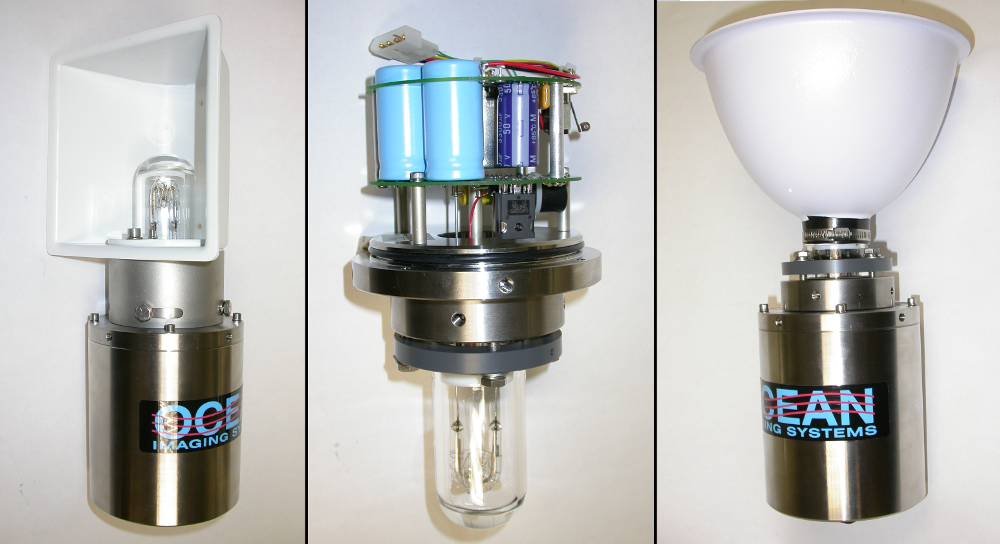
The Model 3883 Strobe is a smaller strobe intended for applications that require periodic images. It is not intended for applications that would require continuous repetition rates faster than 7 seconds. It is optimized for small size and weight, and is thus most suited for ROV, AUV, Pogo or manned submersible applications requiring a few hundred images per deployment. For more rigorous applications use the Model 3831 strobe.
Custom Strobe Configurations
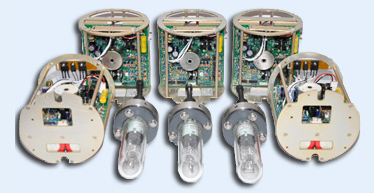
Ocean Imaging Systems (OIS) designs and manufactures a full line of deep sea strobes, from 100 to 600 joule (W-S) power ratings, and housed in aluminum, 17-4 stainless steel or titanium housings. Additionally, OIS can supply strobe components for integration within the customers housing.
All OIS strobes feature high efficiency high voltage power supplies (~90%) and have the capacity to be put into a low power standby state. OIS also designs and manufactures custom strobes for a broad range of military, offshore and scientific applications. The strobes shown in the data sheet below represent only a small sample of what OIS can supply. Strobes can be supplied to operate from external power sources or from an internal battery.
Sediment Profiling Cameras
The Ocean Imaging System (OIS) Sediment Profiling Camera has evolved from the original Model 3731 sediment camera designed at Benthos in the early 1980’s with a 4000 meter depth rating. The original camera was developed in cooperation with Dr. Donald Rhoads and Dr. Joseph Germano who pioneered Sediment Profile Imaging (SPI) at Yale University.
The original Benthos design used a 35mm film SLR camera as its sensor, and OIS has re-designed various deployment frames and continuously upgraded the camera over the years. The current versions incorporate a 24.1 megapixel Nikon DSLR camera, providing high resolution digital images. The variety of designs for the Model 3731 camera include ones for diver operation, for handheld operation in shallow environments, and with a lightweight aluminum frame for small boat applications.
The Model 3731 is available in three housing materials (316 stainless steel, 17-4 stainless steel and 6061-T6 aluminum) rated for either 1,000 or 4,000 meter operation.
Practical and scientific information on Sediment Profile Imaging is available on Dr. Germano’s website , including an overview of the SPI method. For more detailed technical information, see “The use of Sediment Profile Imaging (SPI) for environmental impact assessments and monitoring studies: Lessons learned from the past four decades.” (2011) Oceanography and Marine Biology: An Annual Review 49: 247-310.
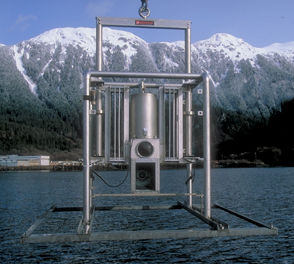
Lasers
Designed as a scaling device for video and digital cameras, the Ocean Imaging Systems Model 400-37 laser features a titanium housing and connector, sapphire optical port, and an adjustable “ball in socket” mounting clamp.
Typically, two lasers (or optionally 4) are mounted and aimed to place two laser “dots” within the field of view of the camera, a known distance apart. The dots serve as a known reference for scaling objects within the image.
